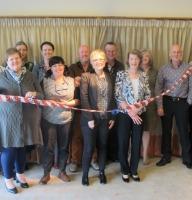National and State Libraries Australasia (NSLA) is a leading library sector collaboration of the National, State and Territory libraries of Australia and New Zealand.
How Australasian libraries are working together on digital preservation
How often do you leave a conference, or a meeting, with the best intentions of “collaborating more”, only to see those intentions evaporate quicker than rain on bitumen on a hot summer’s day, as soon as you return to your desk and look at your email inbox? We don’t make these statements flippantly; most of us share a sincere commitment to work together, recognising that for us to move forward and progress our work, we need help from others. Sadly though, what happens next is that reality takes over. Business-as-usual kills the best intentions.
Despite this, the national libraries of Australia and New Zealand and state and territory libraries of Australia have found a model of collaboration that has proven to be extremely rewarding. National and State Libraries Australasia (NSLA) brings these ten libraries together under a shared vision of connecting library professionals to information, and to each other. The libraries have many differences – they range significantly in size; they have differing mandates, and differing priorities – and yet, NSLA is a success story.
One of the significant NSLA success stories is the Digital Preservation working group. Formed in 2012, the group brings together representatives from each of the ten member libraries to identify best practice for preserving digital content – practices that are best served by a collaborative approach.
Outcomes
Over the past five years the group has identified and addressed a number of key issues, starting with a Statement of digital preservation principles for NSLA libraries, which has collaboration at its core.
In 2012, funding work was commenced on reimagining technical registries for digital preservation. Working with various international partners, NSLA supported the creation of a set of requirements and models that have built on an extended current thinking of the place of technical information in digital preservation.
In 2013 the group developed a Digital Preservation Capability Matrix to ascertain our libraries’ organisational ability in relation to DP, and to identify collaboration and development needs. This led to an ongoing Digital Skills project for NSLA libraries, which has run a number of DP-focused programs, including the Library of Congress’s Digital Preservation Outreach and Education program.
A 2015 audit of obsolete physical carriers in our libraries helped to identify collections most at risk, and prioritise digitisation/migration of collections, including an estimated 133,700 digital carriers. Stage 2 of this work is to provide a detailed list of standards for each carrier type, document the in-house capabilities of our libraries, commercial digitisation and transfer options, and identify possibilities for collaborative approaches.
Being geographically remote, opportunities to visit overseas institutions to see and learn about best practice developments are limited. In 2015 and 2016, NSLA funded research trips to Europe and North America so that a member of the DP working group could experience these first-hand and report back on their findings for everyone’s benefit. We also make the most of member libraries’ knowledge, with the National Library of New Zealand piloting a DP internship programme this year, enabling the sharing of ideas, workflows, tools and procedures. The programme will run again in 2018.
Advocacy
One of the group’s objectives is to promote digital preservation within our own libraries, the wider GLAM sector, and beyond. Last year, the group ran Born Digital 2016, a week-long series of events across multiple sites (physical and virtual) aimed at increasing public interest in digital preservation, as well as the content we are preserving. It opened the door to the born-digital collections of the NSLA libraries, and the world of possibilities of interacting with this content.
NSLA libraries contributed in different ways to the week-long event. Some held public events every day, others used social media. The point was that each library contributed in a way that was within the boundaries of their resources and remit. The benefit was in the positive outcomes for the libraries and NSLA.
Born Digital 2016 was very much an advocacy activity and will be continued in 2017 and 2018 with new opportunities being used to promote the digital preservation agenda. (IDPD2017 is one such opportunity and all NSLA libraries are taking part!)
Factors for success
Is NSLA special? No, it’s no different from other membership organisations. But it does have some key factors that increase the chance of success in collaboration.
Firstly, the organisation is relatively small; two national libraries and eight state and territory libraries. The group’s size allows everyone a seat at the table – everyone’s viewpoints are heard, everyone’s needs are understood.
Secondly, there is a shared vision. All members are libraries with a shared mandate – we are all here to preserve and provide access to Australia and New Zealand’s documentary heritage. The chief executives of NLA libraries and staff in the NSLA office have worked to ensure that the vision and strategy fits all members and that it is embraced by all. We may be small, but our achievements have had big impacts.
Looking to the future
In 2018 and beyond, the working group is developing a roadmap identifying further opportunities for collaboration, extending the Australasian DP Community of Practitioners, continuing our advocacy role with Born Digital 2018, and building on our achievements of the last five years.
The NSLA model works because of a commitment from everyone to actively maintain the momentum that comes from face-to-face meetings and conferences, despite the competing priorities of ‘business-as-usual’ workloads. It exists because of a supportive group of chief executives. It is sustained by the passion of its members.
